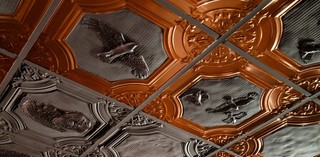11th Asia Pacific Triennial: Extended

Jasmine Togo-Brisby, Australian South Sea Islander, Australia b.1982 / Copper Archipelago 2024 / Copper, resin and steel / 50 × 960 × 360cm (approx.) / Commissioned for ‘The 11th Asia Pacific Triennial of Contemporary Art’ / Purchased 2024 with funds from Tim Fairfax AC through the QAGOMA Foundation / This project is supported by the Queensland Government through Arts Queensland and assisted by the Australian Government through Creative Australia, its principal arts investment and advisory body / Collection: Queensland Art Gallery | Gallery of Modern Art / © Jasmine Togo-Brisby / View full image
When
28 Apr – 13 Jul 2025
Where
Queensland Art Gallery & Gallery of Modern Art, Galleries 3.3 & 3.4 (Marica Sourris and James C. Sourris AM Galleries) & Gallery 3.5 (Margaret Mittelheuser AM and Cathryn Mittelheuser AM Galleries)
About
‘Asia Pacific Triennial: Extended’ at the Queensland Art Gallery and Gallery of Modern Art includes a selection of installations, paintings, sculptures, photographs, and video showcasing ‘The 11th Asia Pacific Triennial of Contemporary Art’, presenting a snapshot of the most exciting contemporary work being produced in the region.
Bringing compelling new art to Brisbane, the Triennial is a gateway to the rapidly evolving artistic expression of Australia, Asia and the Pacific.
Works in this exhibition are protected under the Australian Government’s Protection of Cultural Objects on Loan Act 2013. Find out more.

